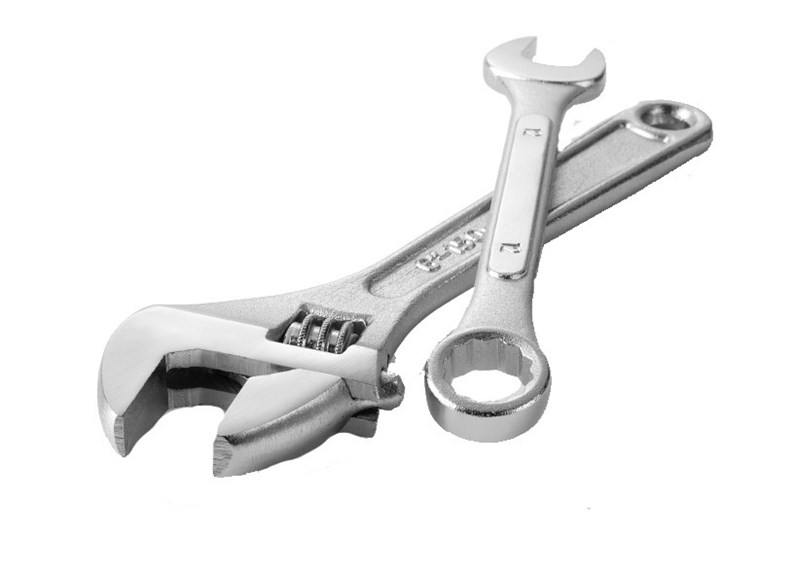Nature's elements can take a toll on almost anything man-made, particularly exterior surfaces like fences, decks, and siding materials. Given the temperamental seasons here in the tri-state area, it's important to consider not just aesthetics, but longevity and durability when you or your association is in the market for new fencing, or trying to decide on what kind of brick to use on the footpaths through the community gardens.
Before You Even Start
The most important aspect of deciphering the proper approach to maintenance of fences, vinyl siding, brickface and patios is knowing what causes aging, and how long each product involved in the project should ultimately last. Equally significant is preparing for any new construction, according to David H. Vahsling, an engineer for the Becht Engineering Company, Inc., headquartered in Liberty Corner, New Jersey. "Proper drawings before and supervision during construction are very important," says Vahsling, because what you're envisioning for your expansive new deck or cobblestone walkway may not jibe with the limitations of drainage, the climate, or your budget.
So before you rush off to your local Home Depot to pick out materials, and start digging holes in the lawn, you need to have at least one high-level conference with your contractor, your architect, and your landscaper to vet out the design for your project and to make absolutely sure all the elements will work together.
Once you get the go-ahead for your project, your options regarding building materials (and prices per-square-foot) may be dizzying, but your basic choices usually boil down to wrought iron, wood, and aluminum—with a couple of space-age polymers thrown in for variety.
PVC vs. Wood: A Slick Alternative
In recent years, the use of polyvinyl chloride (PVC) and other wood resin substitutes has gained momentum in the construction field. Vinyl fencing has been available since 1984, and has five times the tensile strength of wood and four times the flexibility. Maintenance-free vinyl is impervious to weather, and will never require painting. Vinyl products will not peel, chip, rot or discolor.
Because of PVC's economic appeal, today more and more builders and homeowners are looking at PVC fencing as an alternative to more expensive, high-maintenance wood. PVC is easy to install—which cuts down on billable man-hours—and can even be molded to mimic wood grain. "A lot of associations have turned to PVC in the last three years," says Robert Garcia, owner of the Dayton, New Jersey-based Rutgers Fence and Construction. "There is little to no maintenance, aside from power washing."
PVC can easily be used for siding, too. Garcia says his clients have moved toward PVC in greater percentages in recent years, and the practice is continuing to grow. "Right now, about 25 percent of our customers are going with PVC decks and about 50 percent go with PVC fencing," he says, adding that cellular PVC can be left unfinished, or with a color-matched permanent finish. At approximately $3 per linear foot, PVC costs less than redwood or cedar, but slightly more than finger-jointed pine, which ranges between $2 and $2.50 per foot.
Great as that sounds, the material of choice for many fences and decks is still natural wood. "It all depends on what wood was or is used—that makes a big difference," says Garcia. There are New Jersey state requirements when using wood in a construction project, and the cheapest wood allowed is cedar, the cost of which is nearly half that of a more solid, longer-lasting wood like spruce. With economy comes penalty, however. The life span of cedar—approximately 12 years—is roughly half that of spruce. "Any fence over 12 years old is probably starting to go, and after 15 years, it will be shot," says Garcia. "And that's because the builder probably used cedar, since that's all that is required by law."
By contrast, the use of spruce can extend the life of a fence by nearly 10 years, but that's only helpful to know if you're considering building or rebuilding from scratch. For those looking to extend the life of an existing wood fence, Garcia has one word: paint. "If you paint a cheap fence, you might get another five years out of it—maybe," he says.
However, Vahsling says that wood is still a preferable choice when it comes to decks because of the natural aesthetic. "We favor use of wood or wood-like materials when feasible," he says, adding that nearly all commercial lumber for outdoor products is pressure-treated these days, which endows the wood with chemical properties that enable it to repel both water and pests, like termites.
Garcia says that he gives potential customers a price breakdown, along with respective facts on each option. "We price wood versus PVC and let them take it from there," he says.
Getting On Deck
"A good foundation is essential for fences and decks," says Vahsling. "If you're using wood posts, they need to be placed well below the freeze line. And don't pour concrete around the base—which makes it extremely difficult to remove in 20 years when the wood is rotted out. The concrete ring actually traps water and promotes rot, unless care is taken to seal the joint between the wood and concrete on a regular basis," he adds.
While a homeowner's personal preference might be for an all-wood patio, other considerations have to be taken into account before the decision is made. "If raising above grade is a problem," cautions Vahsling, "if you have to match with doors or steps, you may need to go with concrete to remain flush with grade, which isn't acceptable for a wood deck."
Garcia adds that if a wood deck is the final choice, extreme care must be administered in order to prolong the deck's life and to keep it looking good. "Decks need to be built of pressurized, treated wood. You have to take care of them by sealing and staining," says Garcia.
The typical base cost for a 15-by-12-foot smooth slab patio that doesn't require removal of preexisting material is roughly $1,600. An equivalent cedar deck should cost roughly $8,000. A new wood-polymer composite deck runs approximately $7,400, and sealing or painting a deck this size runs between $250 and $750, on average.
The more popular sealants on the market at the moment are water-based silicone rubber liquids that seal a multitude of surfaces, including wood, brick, stucco and tile, with just one coat. They can be applied with a brush, a roller, or a sprayer, or can be mixed directly into oil and water-based paints and coatings. These products stretch to accommodate structural movement up to 300 percent and can substantially prolong the life of any porous surface with no need for seasonal recoating. Silicone-based sealants run about $30 per gallon.
About Brickface
If you're looking to re-side your home or your association's buildings, brickface may offer yet another option in addition to PVC and wood. Brickface is a masonry application that creates the look of real brick in a variety of shapes and colors, making a home's exterior more attractive and maintenance-free, according to Doug Jimmink, president of sales and marketing for Garden State Brickface Windows and Siding in Roselle.
In most cases, brickface can simply be installed over existing brick and wood, and has a lifetime warranty, which has been a big selling point. While larger jobs often bring down prices, the opposite is true when it comes to brickfacing. "We did all the work," says Jimmink, "but contracted separately with each homeowner because it was less expensive—we adapt to customer needs."
Estimating the cost of professional brickfacing is difficult for number of reasons, explains Jimmink, but he explains that they handle jobs ranging from $15,000 to $200,000. The best breakdown he could offer is their smallest job, which totaled $2,500 for 200 or 300 square feet. Brickface is more expensive than vinyl siding, which is usually 20 percent less, but carries greater aesthetic value, which is an important consideration for resale.
Getting the Work Done…and Paying For It
The best time to have fencing, decking, or siding work completed is in the spring or fall—and most jobs can be completed in less than a week. "Our busiest periods are April, May and June and the middle of September, October and November," says Jimmink. "We can do any job usually in a few days to a week, and we send out a substantial, trained crew."
State laws are not specific to this work but companies are required to obtain general contracting licenses and insurance, which is a point Garcia stresses. "You would be surprised at the large percentage of contractors [that] don't carry liability insurance—which means you are liable," says Garcia. "You should make sure your contractor carries both liability insurance and auto insurance."
Whether you've just bought a home in need of some exterior TLC, or it's time to spruce up the home you've been occupying for decades, it's important to consider not only how you want the finished project to look, but how it will wear, and how well it will stand up to season after season of rains, snow, and summer heat here in the mid-Atlantic area. With competent help from your hired professionals and a realistic approach, you'll be enjoying your home—or your deck or patio—for years to come.
W.B. King is a freelance writer and frequent contributor to The New Jersey Cooperator.







Leave a Comment